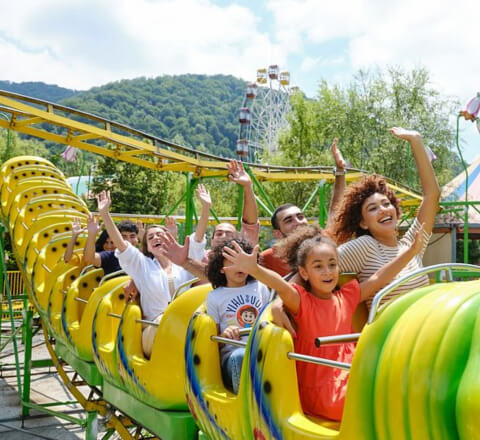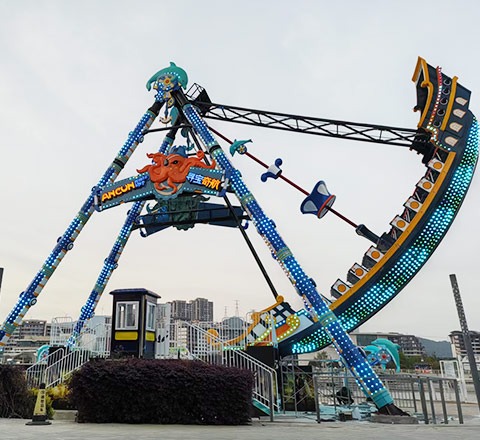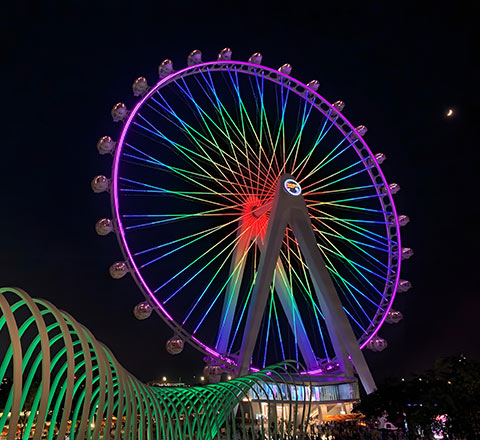Каждый ребенок мечтает взмыть в воздух на американских горках, чтобы ветер развевал волосы, а смех разносился по трассе. Но что, если эта мечта может воплотиться в жизнь на вашем собственном заднем дворе? Американские горки на заднем дворе больше не являются предметом звездной славы YouTube или досок Pinterest - они появляются в районах повсюду, благодаря инновационным проектам и страстным "сделай сам". И вот в чем секрет: аттракцион кажется по-настоящему волшебным, когда он сочетается с Тематика американских горок на заднем дворе которые добавляют сюжет, приключения и индивидуальность. Правильно подобранная тема превратит вашу дворовую горку не просто в аттракцион, а в незабываемое событие для всей семьи.
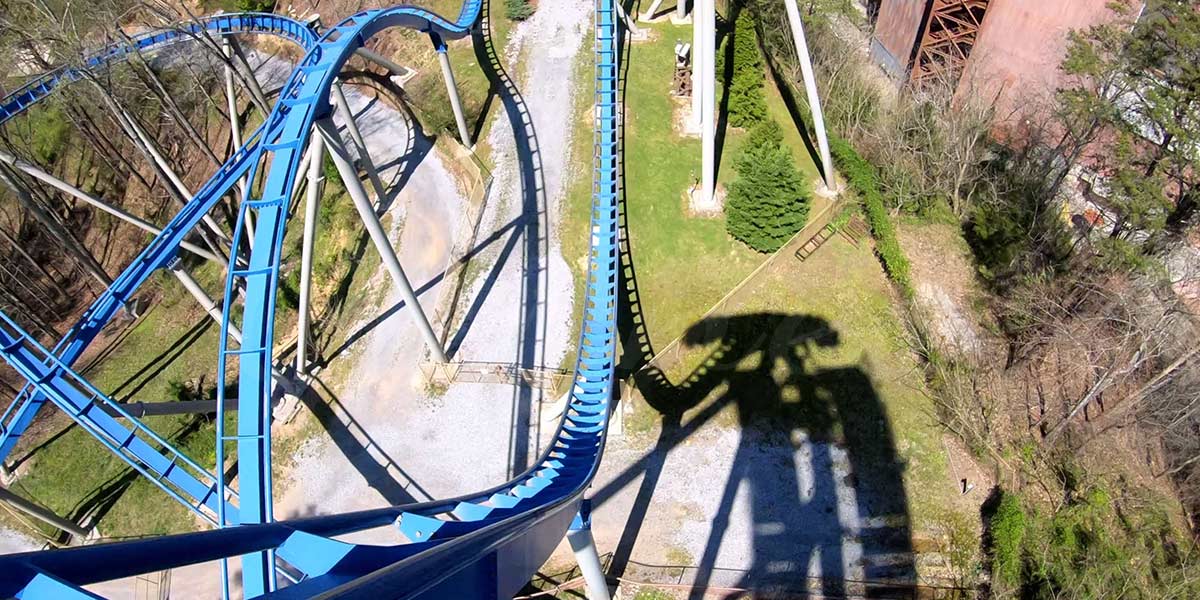
Почему стоит создать свою дворовую американскую горку?
Сильная тема превращает базовую сборку в захватывающую, самодельный аттракцион.
Это повышает игровое значение для детей, улучшает привлекательность вечеринки и делает ваш сад похожим на мини-парк.
Что еще более важно, тематика определяет практические решения - цвета, реквизит, освещение, звук, материалы и уход за ними - так что ваш Американские горки на заднем дворе DIY или установка комплекта выглядит намеренной, а не импровизированной.
Преимущества с первого взгляда
- Повышенная вовлеченность и фактор "еще одна поездка".
- Улучшенные фото/видео и возможность их распространения.
- Четкие указания по материалам, вывескам и освещению.
- Более легкая модернизация в будущем (поэтапное добавление сцен, реквизита или эффектов).
Как выбрать подходящую тему для американских горок на заднем дворе (прежде чем покупать или строить)
Заблаговременный выбор темы позволит избежать переделок и поможет вам подобрать планировку в соответствии с вашим двором и бюджетом.
Учитывайте особенности ваших райдеров, имеющийся уклон и то, сколько времени вы хотите тратить на обслуживание.
Точки принятия решений
- Профиль гонщика: Детские американские горки на заднем дворе предпочитает яркие, дружелюбные темы; подростки/взрослые работают с более темными или захватывающими концепциями.
- Пространство и склон: Рельеф и туннели подходят для больших садов с уклоном, а компактные участки - для мотивов шаттлов или стартовых станций.
- Бюджет и содержание: Аниматроника и водные фигуры стоят дороже и нуждаются в обслуживании; окрашенные квартиры и светодиоды не требуют особого ухода.
- Климат: Ультрафиолет, дождь, влажность и зима влияют на краски, ткани и электронику.
- Безопасность и разрешения: Держите все реквизиты за пределами ограждений; перед строительством ознакомьтесь с местными правилами.
👉 Все еще взвешиваете безопасность, стоимость и основы планировки? Получите общую картину в нашем Руководство по часто задаваемым вопросам Backyard Roller Coaster
Популярные темы для американских горок на заднем дворе (с примечаниями по сборке)
Эти проверенные временем концепции хорошо применимы к виды ролловАмериканские горки - от детских мини-горок до Американские горки для всей семьи на местности, шаттлы или стартовые сооружения.
Каждая идея включает в себя краткие советы, как сделать ее практичной, долговечной и безопасной.

1) Приключение в джунглях
Эстетика джунглей великолепно смотрится на деревянные американские горки на заднем дворе и макеты местности.
Используйте глубокий зеленый цвет, искусственные лианы, плоские скалы и звуковое сопровождение в стиле "лес", чтобы скрыть опоры и обрамить неожиданные моменты.
Примечания к сборке: Листва, устойчивая к ультрафиолетовому излучению, герметичная древесина, противоскользящие настилы, отделка от насекомых.
Безопасность: Держите лианы и баннеры подальше от движущихся частей; в туннелях поддерживайте видимость.
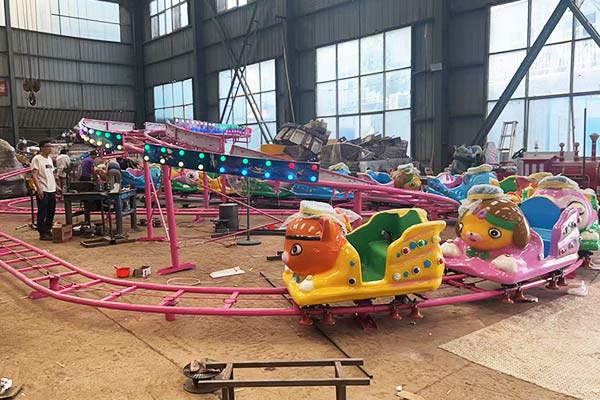
2) Космическая миссия
Естественно, для шаттл или запуск Концепты, космическая тематика превращают вашу станцию в "командный центр".
Подумайте о металлических панелях, светодиодных лентах и саундтреке с обратным отсчетом.
Примечания к сборке: Герметичные светодиоды, кабелепровод, светоотражающие винилы для ночного свечения.
Безопасность: Неяркое освещение рядом с дорожкой; закрепите все панели на металлических рамах.

3) Бухта пиратов
Флаги, ящики с сокровищами, веревочные перила и станция в стиле дока рассказывают морскую историю - отличный вариант для Детские американские горки на заднем дворе и семейных праздников.
Примечания к сборке: Краска морского класса, канат с УФ-стойкостью, герметичные стойки "бочка" (полые, легкие).
Безопасность: Избегайте настоящих цепей; используйте мягкий реквизит возле очередей.
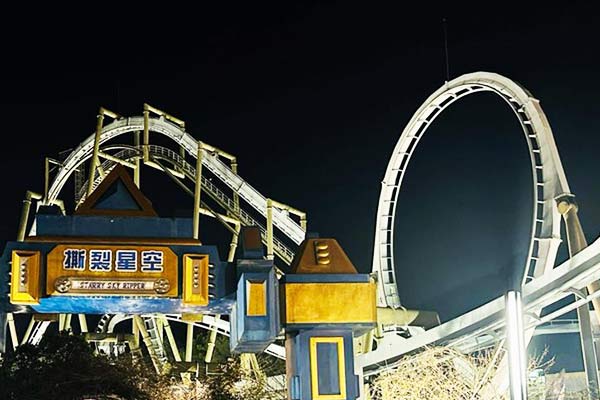
4) Шахта с привидениями
Минимум места, максимум настроения.
Темная древесина, искусственный камень, мерцающие фонари и указатели "нестабильный туннель" делают семейный аттракцион атмосферным.
Примечания к сборке: FR-ткани, погодозащитные фонари, панели из пенополистирола.
Безопасность: Кабельные трассы, не дающие разрывов; аварийное освещение в туннелях.

5) Гоночная трасса
Отлично подходит для ровных участков или участков с пологим склоном.
Пронумерованные автомобили, баннеры спонсоров, очередь на пит-лейн и табло с таймером добавляют дружеского соперничества.
Примечания к сборке: Алюминиевые направляющие для баннеров, высококонтрастная краска, долговечные виниловые деколи.
Безопасность: Свободные пути эвакуации; никаких отдельно стоящих флагштоков рядом с дорожками.
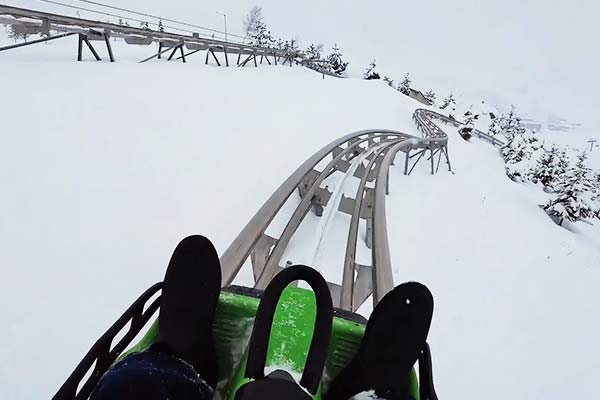
6) Арктическая снежная трасса
Идеально подходит для более холодного климата или для зимних накладок (привет, Вирджиния).
В дни катания на санях используйте белую/иссиня-голубую палитру, реквизит из снежной пены и сезонные эффекты "снежной машины".
Примечания к сборке: Холодостойкий пластик, антиобледенитель на ступенях, съемный декор для хранения в межсезонье.
Безопасность: Дополнительное сцепление на платформах; защита от влаги вокруг электропроводки.
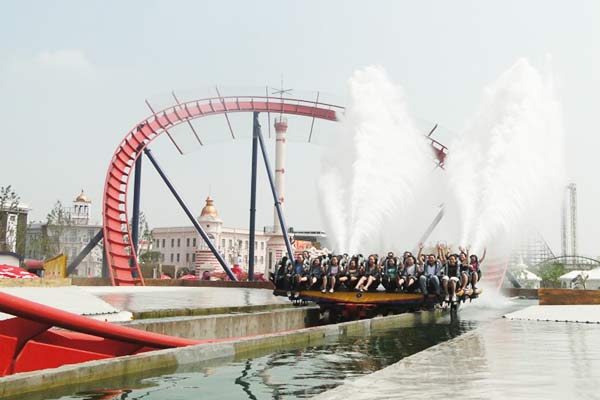
7) Вулкан и Всплеск
Для больших дворов с уклоном и профессиональной инженерии - сочетайте красные/оранжевые камни с брызговик финал или вспышка тумана.
Хорошо сочетается с запуск Секция визуальной драмы.
Примечания к сборке: Дренажные траншеи, нескользящая поверхность, коррозионностойкие крепления.
Безопасность: Электрическое отделение от воды, контролируемое замедление и планирование эвакуации по типу спасательных кругов.

8) Город в стиле стимпанк
Клепаный "металл", стойки под давлением и вывески цвета сепии создают изысканный вид, который хорошо сохраняется.
Идеально подходит для стальных семейных подставок, где чистая геометрия становится частью искусства.
Примечания к сборке: Акценты порошкового напыления, отделка из искусственной латуни, индустриальные звуковые петли.
Безопасность: Все датчики и ободки полностью закрыты; закругленные края на высоте госта.
DIY vs Kit vs Manufacturer-Built (тематическая сложность и риск)
Амбиции должны соответствовать вашему пути развития.
Наборы для создания американских горок на заднем дворе Ускоренное создание надежной геометрии позволит вам сосредоточиться на пейзажах.
DIY дает полную свободу, но расчеты нагрузки, зазоры и контрольные списки QA принадлежат вам.
Производитель выравнивает проектирование, безопасность и тематическое оформление С первого дня - лучший для туннелей, брызг, запуска или челнока.
Правило большого пальца
- Простой декор + небольшой аттракцион: Можно сделать самому или использовать набор.
- Местность, туннели, вода или спуск на воду: привлеките профессионалов для разработки конструкции, тормозной системы, дренажа и электрики.
Бюджетирование темы (сколько это стоит на самом деле)
Оформление варьируется от красок и баннеров до рокариев, воды и систем управления шоу.
Используйте это для определения ожиданий и фазовой работы с умом.
| Область применения | Обычные расходы | Что входит в комплект |
| Краска + вывески + флаги | $200-$1,000 | Цветовая гамма, знаки станций, наклейки |
| Освещение + звук | $300-$2,000 | Светодиоды, усилитель, динамики с защитой от непогоды |
| Пейзажные квартиры/пропасти | $500-$3,000 | Пенопласт, бочки, ящики, виноградные лозы |
| Продвинутые эффекты | $1,500–$10,000+ | Туман/брызги, аниматроника, проекция |
| Водные объекты | Конкретный проект | Дренаж, нескользящие поверхности, изоляция |
Совет: Разделите проект на этапы: начните с красок и вывесок, добавьте освещение, а затем добавьте реквизит и эффекты, если позволяет бюджет.

Материалы, долговечность и уход за горками на заднем дворе
Хорошее тематическое оформление выдерживает непогоду, уборку и передвижение наездников.
Выбирайте отделку и крепления, предназначенные для использования на открытом воздухе, и планируйте простое обслуживание.
Рекомендации
- Покрытия: УФ-стойкая грунтовка + верхнее покрытие; антикоррозийное покрытие для стали; герметизация всех обрезанных кромок.
- Реквизит: Стеклопластик, ПНД и фанера морского класса выдерживают; избегайте необработанной ткани.
- Электрика: Светильники с классом защиты IP, капельные петли, защита GFCI/RCD, маркированные соединения.
- Крепления: Нержавеющие/Гальванические крепежи; контргайки или фиксаторы резьбы в местах вибрации.
- Уход: Ежемесячная проверка болтов; сезонное обновление лакокрасочного покрытия; вентиляция с помощью светодиодных контроллеров.
Безопасность, соблюдение норм и доброжелательность к соседям
Лучшая тема - это та, которая не выходит за рамки аттракциона и делает всех счастливыми.
Проектируйте с учетом расстояний, видимости и шума.
- Держите декор снаружи минимальный зазор вокруг поездов и движущихся частей.
- Используйте огнестойкий мягкие изделия и закругленные края на уровне гостя.
- Управление Шум и световое излучение с таймерами и диммерами.
- Подтвердите разрешения и зонирование-Особенно если речь идет о сооружениях, туннелях или воде.
- Поддерживать очистить выход и доступ к средствам первой помощи в любое время.

Шаг за шагом: Воплощение вашей темы в жизнь
Простой процесс позволяет держать под контролем масштабы, а результаты соответствуют вашему видению.
Вдохновение от реальных построек
Нужен творческий толчок? Видеоролики и доски объявлений пользователей показывают, что возможно при любом бюджете.
Попробуйте поискать тематические подставки для заднего двора на YouTube и Pinterest, чтобы увидеть, как люди увеличивают или уменьшают масштаб идей для своего пространства.
(Если у вас уже есть любимчики, создайте личную доску или плейлист, чтобы согласовать их с семьей и подрядчиками до покупки материалов).
Вопросы и ответы: Темы, самоделки и практичность
Как сделать американские горки в домашних условиях?
Начните с малого (санки/горки), изучите базовую геометрию и используйте готовые наборы для создания конструкции, чтобы сосредоточиться на тематике.
Какие бывают типы дворовых американских горок?
Детские маленькие американские горки, Семейные американские горкиДеревянные/стальные конструкции, шаттлы и стартовые комплексы, а также модульные конструкции. Наборы для создания американских горок на заднем дворе и полностью индивидуальные установки.
Сколько стоит построить собственные американские горки на заднем дворе?
Материалы DIY могут стоить от сотни до нескольких тысяч; детские наборы ~$3k-$10k; семейные стали ~$20k-$50k+; сложные темы (туннели/всплески) добавляют больше.
Реально ли упасть в бассейн?
Да, при условии профессионального проектирования замедления, управления водой, электрической изоляции и эвакуации пассажиров.
Могут ли взрослые кататься?
Выбирайте американские горки для семейного отдыха с подходящей геометрией ограничителей и опубликованными ограничениями по весу/росту.
Готовы начать?
Если ваша концепция обретает форму и вы хотите увидеть варианты габаритов и вместимости, ознакомьтесь с действующими моделями и сроками изготовления здесь: Продается дворовая американская горка.
Если вы все еще сравниваете "сделай сам", "набор" и "заказ", то в нашем материале вы найдете описание основных аспектов (пространство, безопасность, стоимость, обслуживание). Руководство по часто задаваемым вопросам Backyard Roller Coaster.
Ссылки
– [Мы построили американские горки у себя на заднем дворе!]
– [Топ-10 лучших американских горок на заднем дворе - YouTube]
– [29 идей американских горок на заднем дворе - Pinterest]



